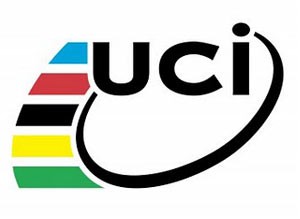Governing body to introduce allowable incline limit to allow for individual rider comfort
 The International Cycling Union (UCI) is to enforce its saddle tilt rule in 2012, BikeBiz reports. The regulation, as part of the raft of rules that govern the shape of frames, and riders’ positions, does not allow for saddles to be tilted; while the rule was generally ignored by riders, mechanics, and the UCI for many years, the governing body began to enforce it during this year’s Tour de France; mostly concentrating on time trial bikes.
The International Cycling Union (UCI) is to enforce its saddle tilt rule in 2012, BikeBiz reports. The regulation, as part of the raft of rules that govern the shape of frames, and riders’ positions, does not allow for saddles to be tilted; while the rule was generally ignored by riders, mechanics, and the UCI for many years, the governing body began to enforce it during this year’s Tour de France; mostly concentrating on time trial bikes.
UCI technical coordinator Julien Carron announced the decision in a letter to bike manufacturers yesterday; but stated that, instead of the draconian enforcement of the existing rule, the UCI would introduce an allowable incline limit.
UCI rule 1.3.014 simply states: “The saddle support shall be horizontal. The length of the saddle shall be 24 cm minimum and 30 cm maximum.”
The simple rule does not appear to allow any room for interpretation but, since it was a rarely enforced regulation, riders have ignored it and been allowed to do so for many years.
Many riders like to tip their saddle forward slightly, to aid comfort, while a few like to tilt it backwards. The late Frank Vandenbroucke used to have his saddle nose pointing upwards quite prominently, with the Belgian’s team mechanic once remarking that: “Frank likes to hurt his balls.”
To allow for riders to keep their comfortable positions – and to allow for the occasional Vandenbroucke-style masochist – the UCI is to amend the rule to allow for a tilt of up to 2.5 degrees, with a tolerance of 0.5 degrees, in either direction.
“As a result of many discussions and comments concerning Article 1.3.014 on the horizontality of the saddle, the UCI has decided to clarify the situation by introducing a tolerance to the measurement of the saddle angle,” Carron wrote. To determine the value of this tolerance, the UCI has taken into account many measurements recorded in competition, numerous scientific articles published on the subject describing biomechanical issues as well as discussions with several saddle manufacturers.
“The concept is to grant the rider sufficient freedom to allow a comfortable position to be adopted,” he added, “reducing the pressure on the perineum, while avoiding any deviation through an excessively sloping saddle that could improve sporting performance to an unacceptable degree by the addition of a lumbar support.”
As with the majority of the UCI’s regulations of this kind, the saddle tilt rule will mostly affect time trial bikes, and this is likely where it will be enforced the most. Bikes are already scrutinised by technical commissaires before riders are allowed to start, and this will be just one more check for them to make.
Unless a rider turns up to the start line with an obviously sloping saddle however, bikes are unlikely to be scrutinised on anything more than a random basis in road races; the prospect of checking up to 200 bikes at once is surely enough to make even the most zealous commissaire baulk.
A forward-tilting saddle on a time trial bike allows a rider to make the lower positions more comfortable, thus allowing them to get more aerodynamic. If they are forced to bring their saddles closer to the horizontal – if, under the revised regulation, not actually to it – many will find themselves forced to bring their frontal position a little higher or risk losing power.
New regulation to regulate bottle size, shape, and position
As well as saddle tilt, Carron’s letter also outlines an amendment to UCI rule 1.3.024 – which deals with the outlawing of fairings – to include the size, shape, and position of bottles, in order to prevent them from becoming too integrated into the frame and giving an aerodynamic advantage.
“The positioning and dimensions of bottles used during competition are the subject of a change of the regulations that was approved by the Management Committee in September,” he wrote.
The addition to the rule will come into force on January 1st, 2013, and states that:
“Bottles shall not be integrated to the frame and may only be located on the down and seat tubes on the inside of the frame. The maximum dimensions of the cross-section of a bottle used in competition must not exceed 10 cm or be less than 4 cm and their capacity must be a minimum of 400 ml and a maximum of 800 ml.”
The Cervélo P4 fell foul of the original rule back in 2009, with it’s integrated bottle positioned in the intersection of the seat and down tubes. The frame is still in use by Garmin-Cervélo, with an alternative aero bottle fitted to the void where the integrated bottle has been removed from; Cervélo continues to manufacture the frame as it is, since it is a popular frame in triathlon where it is legal.
This rule will outlaw the kind of bar mounted set up often used by triathletes, but, more significantly, ban the use of saddle mounted bottle cages. Some time trial frames – including Giant’s Trinity Advanced, which is used by the Rabobank team – do not have bosses for fitting bottle cages, meaning that riders from the Dutch team use saddle mounted cages. With the introduction of this new rule in 2013, Giant may be forced to change its design.